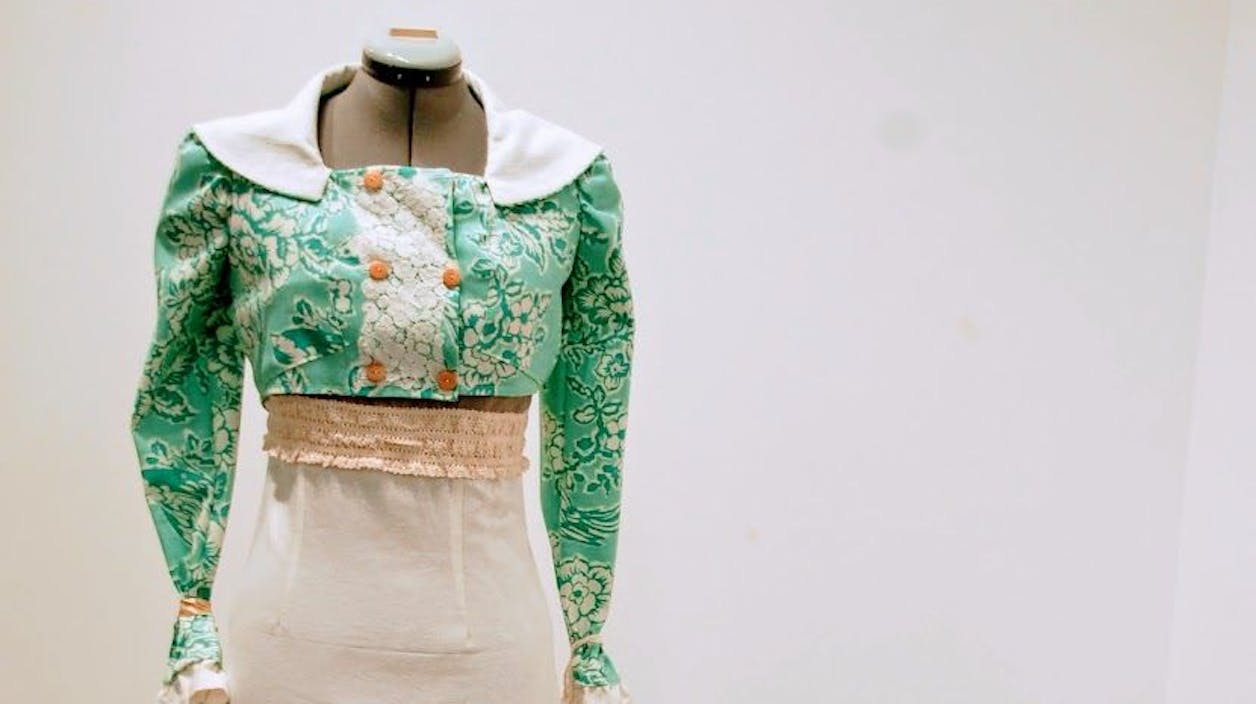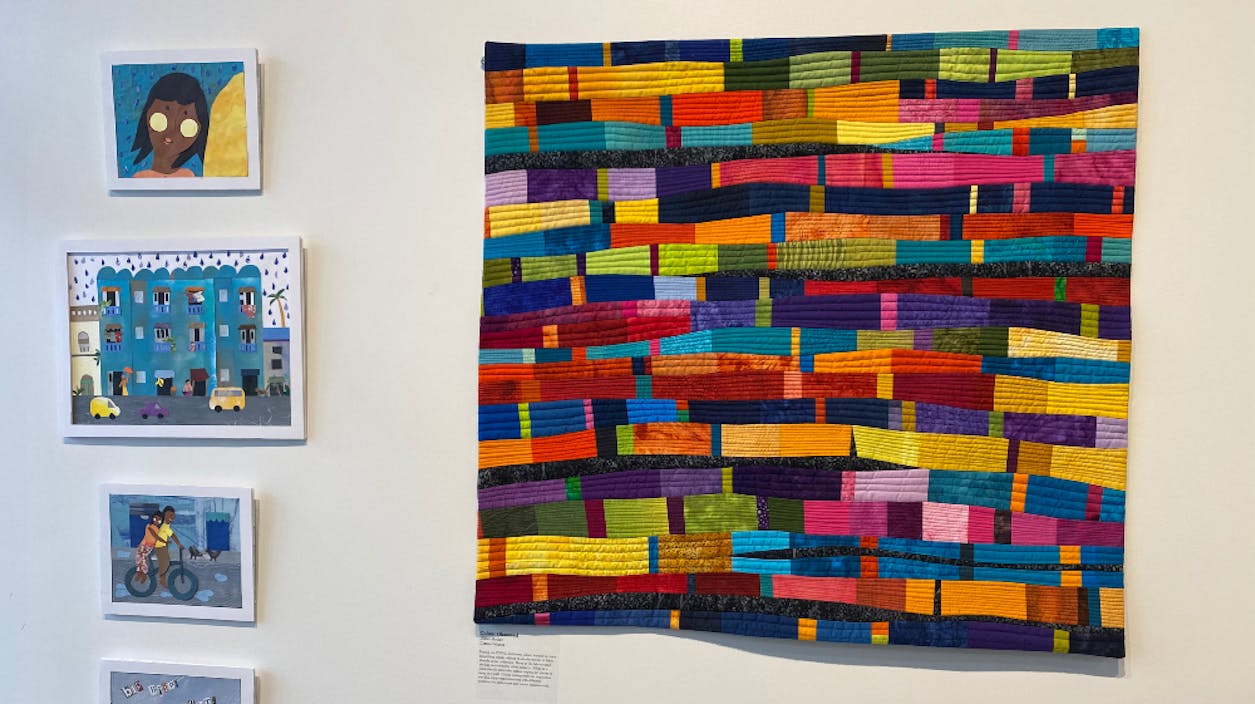
A Regency inspired embroidered cream gown topped with a turquoise jacket, with a bonnet and a coin purse attached, which the maker hopes one day to wear at a Jane Austen convention. Heart-shaped rocks, one made of alabaster, smooth and small enough to fit in your palm. An artsPlace Lego building modelled closely after the real one - with tiny pottery wheels, a mini popcorn machine for the movies projected in the miniature theatre, and small art supply cupboards. Framed poems about chickadees. Lush fabric lips. A close-to-scale origami mother bear, with her origami cub not far from her, perched on a white plinth next to ceramic bowls and plates. Photos of people sitting on their front porches, and serene paintings of mountains and flowers.
What do these objects have in common?
They are all answers.
“How are you?” was the question, a simple one rendered complex in these COVID-19 times, especially when addressed to an entire community. It was an invitation at-large to share everyday struggles, feelings, thoughts, the challenges and, possibly, the rewards of this new reality.
The answers came in bits of fabric, cut-out paper and painted colours, metal pieces and polished stones, wood, and words. Treasures, all of them, hosted in this eclectic exhibition space.

A diorama with a scene created entirely out of felt stands close to the entrance. Gazing inside, you can see a bright yellow moon and sparkling stars, above a dream-like Canmore-scape; the whole downtown is inside the box, including the Big Head.
In this whimsical piece there is something out of a children’s book, or a fairy tale – one in which you could easily lose yourself, crossing felt bridges and peering inside felt windows, in a world soft and cozy, in a universe with dulled edges, even for a moment.
A sense of wonder, and curiosity (“What else is there to discover?”) pulls the viewer deeper and deeper inside the gallery, beckoning to stop and look and get to know the people behind the works of art.

Displayed on a white plinth lays a little book with photographs. The pictures are of mountains, the words of hope. In short sentences, the author tells a story of a life in pursuit of it. It wasn’t always an easy life, but it was full of family, and friends, and hope. Hope is elusive sometimes, hiding in unexpected places, taking strange shapes and forms, but that doesn’t mean you shouldn’t keep looking.
These pandemic days, the little book says, “Hope smells like Lysol wipes”.
Yes, there’s playfulness in this exhibition, and laughing people and calm lake waters – but the challenges raised by the pandemic are omnipresent.

A pottery bowl, meant to hold and support, is full of holes and burdened with an iron chain. There’s a sense of weariness, of purpose lost. A small quilt, colorful face masks fluttering cheerfully, drying in the spring wind, testifies that the creator has lived in Canmore for about a year but “has found it difficult to meet people and make new friends during the pandemic”.
What values stayed strong, what supported the community this last, trying year?
“Family”, says a father who lost his job, which in turn gave him the chance to stay home and witness the first steps of his son. From a photo on the wall, the family is smiling at each other.

“Hard work” says Thomas Snow who was able to come together with his extended family for a hunting camp for the first time in over a decade. A celebration, of course, but also hard work - physically, mentally, emotionally - to discover what’s essential, what to pass on, how to adapt. It was “an opportunity to tap into something ancient, to really begin to get a sense of who we are, individually and together”.
Going back to the initial question: “How are you?”
The answers come softly: “I’m adapting”, “I keep learning“, “I’m still creating”, “I am changing.”
They, we – together, are, indeed, fine.
Story written by Maria Gregorish, March 2021

















